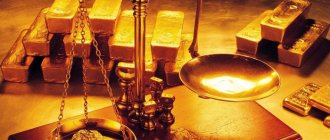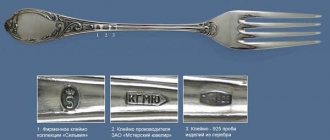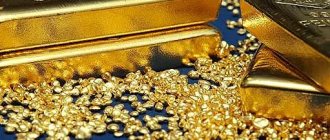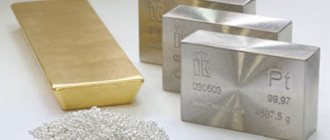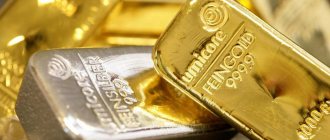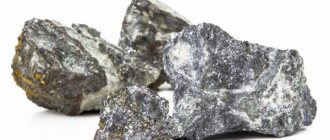Perhaps the only thing that fashion has no power over is gold.
For hundreds and even thousands of years, people have been in love with this beautiful metal. Noble, moderately durable and ductile gold is perfect for jewelry fantasies.
Nature has endowed pure gold with a warm sunny color, flexibility and ductility. The malleable, ductile metal has suitable chemical resistance. In skillful hands, it turns into an exquisite piece of jewelry. The only thing that remains unclear is why include foreign inclusions in this noble metal.
BENDES studio jewelers tell why
In nature, gold is burdened with a number of impurities. Miners need to put in a lot of effort to extract valuable rock from the depths of the earth and rid the mineral of foreign inclusions. The resulting metal is formed into pure gold bars. In Russia, such gold is available for sale at Sberbank, and is called “bank bullion”. To be fair, it is worth noting that even here it is not entirely pure gold. The purity of the bank bullion is listed as 99.99%. This means that the quantitative content of Au (Aurum) per 1000 conventional parts is 999 parts. The remaining one part is the permissible error after cleaning the mined metal.
What is electrum?
The very first alloy of silver and gold in human history was invented in ancient Egypt, and it was called electron, or electrum. Due to the fact that the combination of elements consisted of 50% silver, products made from such material had a white tint. However, the key characteristic of electrum products was their strength, achieved due to the high silver content.
The technology for creating electrum has become the basis for the production methods of various jewelry alloys used today.
Jewelers do not use pure gold for a number of reasons.
Pure gold soft
Jewelry made from it is not very reliable during daily use. Let’s say a girl inadvertently grabbed the door handle too tightly - this already risks damage to the ring. Products are scratched and dents may appear. The result is that luxurious, expensive jewelry quickly loses its attractive appearance.
Weight
Pure gold is quite heavy. In ancient times, when Egyptian pharaohs and queens could afford massive necklaces, precious collars and gold necklaces, jewelers had to use not only artistic imagination, but also think through designs from the point of view of wearing technology. It is not uncommon for massive products to have a counterweight designed for the back. Otherwise, luxurious things were too burdensome, and the person’s back simply began to hurt. Today you can no longer see such majestic forms, but people still do not like to experience discomfort. Especially when it comes to luxury goods.
Color variety
Yellow gold is beautiful, but using it for hundreds of years in a row is very boring. Jewelers undertake various creative experiments, combine metals, and develop new colors. If you are interested in learning about what shades of gold you can get by experimenting with different alloys, read about it in our article 5 types of gold that will change your understanding of traditional metals.
Price
An alloy of gold with silver or copper costs the buyer less than precious metals in their pure form.
Artistic experiments with metal impurities in Russia are regulated by GOST 30649-99. There are two official values assigned to gold – 585 standard and 750 standard. These figures indicate that the proportion of pure gold in the metal alloy is 58.5% and 75.0%, respectively. Everything else is additional components (ligature). Jewelers most often use silver, copper, palladium, nickel and occasionally platinum and other metals as additives. The percentage of these components affects the future color of the metal, strength and resistance to external influences.
BENDES clients
Laysan Utyasheva
Russian athlete, Honored Master of Sports in rhythmic gymnastics, TV presenter and sports commentator.
Oksana Fedorova
Russian TV presenter, philanthropist, fashion model, actress and singer. Miss Russia (2001) and Miss Universe (2002).
Lera Kudryavtseva
Russian television and radio presenter, actress, dancer. She worked for Muz-TV, TNT, TV-6 and NTV.
Natasha Koroleva
Russian singer, actress and fashion model. Honored Artist of the Russian Federation (2004).
Alexander Revva
Russian showman, comedian, TV presenter, singer. Resident of the Comedy Club show.
List of alloys
The value of a silver-gold alloy is determined by the quantitative content of aurum, since it is a more expensive metal. A sample helps determine the gold content in the composition - a measure that demonstrates how many grams (parts) of solar metal are contained in a kilogram of material. The set of remaining elements is called a ligature.
In the metric system of samples, the following samples of gold are distinguished:
- 375: A kilogram of jewelry material contains 375 grams of gold. This means that most of the composition is a combination of less valuable metals, in which argentum predominates.
- 500: Here both elements are mixed in equal proportions, so this alloy is called electrum (electron).
- 585: Most jewelry is made from 585 aurum as it is the most wear-resistant material and can be easily processed.
- 750: the material is characterized by plasticity, explained by the peculiarity of the composition. Products made from purity 750 aurum are popular in the East.
- 916: medical composition on the basis of which orthodontic prostheses are made.
Pure 999 gold is used in the production of bank bars, a sought-after investment item offered by banks.
The shade of a metal alloy is determined by its composition: the more aurum it contains, the yellower the material will be. In addition to silver, the alloy also contains other chemical elements: copper, zinc, palladium, etc. These impurities, together with silver, are classified as alloys. Today, jewelry masters create magnificent jewelry of various shades, combining the components of the ligature, obtaining red, white, lemon and even purple (amethyst) gold.
Effect of impurities on the melting point of gold
The melting point of gold is important for jewelers. When making jewelry, craftsmen try to use more fusible impurities. After all, if gold melts for too long, it slows down and complicates the work of the master.
The melting point of the most popular 585-carat gold ranges from 880°C to 1280°C. The melting point closest to this indicator is copper (1083°C) and silver (962°C). But palladium is a more refractory element with a coefficient of 1554°C.
The appearance of ready-made ligatures greatly simplified the process of creating jewelry. They already contain all the elements in the required proportions to obtain a certain sample and color. Some give it the necessary plasticity for handwork, rolling and drawing gold wire, while others give it fluidity (for precision casting using lost-wax openwork models).
The influence of different metals in the alloy on the properties of the gold alloy
Silver makes the alloy more ductile and malleable. It also changes the shade of the alloy, making it whiter. If you add more than 30% silver, the shade of the yellow alloy will become noticeably lighter, and when the amount of silver increases to 65%, the gold will turn white. When copper , the alloy becomes harder, but its anti-corrosion properties are reduced. Copper also gives the alloy a reddish tint. Cadmium makes the alloy more easily melted. It also gives the alloy a greenish tint. Zinc gives the alloy properties similar to cadmium. It brightens the alloy, which is why it is used to make white gold. A small amount of zinc can also make the alloy slightly greener. Palladium makes the alloy more refractory, forcing the heating temperature to increase. Thanks to this, the alloy becomes noticeably more ductile and lighter - palladium colors it white with a slight beige (flesh) tint. Nickel gives the gold alloy its hardness and changes the color of the alloy to pale yellow. Used as a component of white gold. Platinum bleaches gold more intensely than other alloys and increases its elasticity. Yellowness is lost when the alloy contains about 8% platinum. Nickel, platinum and palladium also give white gold alloys high anti-corrosion properties.
The benefits of gold
Gold jewelry is an excellent gift for friends or relatives and a pleasant purchase for yourself. It can be stored for years and passed from mother to daughter. The gold alloys available on the market today are of high quality. There are people with individual intolerance to certain components, for example, cadmium or zinc, so it is worthwhile to find out about the composition of the alloy before purchasing, so that you do not have to resell the product later. If you have an intolerance to any of the precious metals, you can always do gold plating on the area that comes into contact with the skin, for example, on the stem of the earrings. This simple procedure will allow you to wear any metal jewelry.
Gold alloys are created to provide maximum variety to the jeweler's artistic vision. So, if in many countries only pure gold is priced, in Europe and the CIS the design and relevance of the model are valued. This is why even alloys with low gold content can be very expensive. Buy gold for yourself and your loved ones, or simply admire the beauty of this sunny metal, warming with its golden hue at any time.
Colors of gold alloys depending on composition
| Alloy color | % Au (gold) | % Ag (silver) | % Cu (copper) | % Ni (nickel) | %Zn (zinc) | % Pd (palladium) | % Fe (iron) |
| Light yellow | 58,5 | 32,0 | 9,5 | — | — | — | — |
| Yellow | 58,5 75,0 | 28,0 12,2 | 13,5 12,8 | — | — | — | — |
| Dark yellow | 58,5 | 23,0 | 18,5 | — | — | — | — |
| Pink | 58,5 | 14,0 | 27,5 | — | — | — | — |
| Red | 58,5 75,0 | 7,0 6,0 | 34,5 19,0 | — | — | — | — |
| Green | 58,5 75,0 | 39,0 25,0 | 2,5 — | — | — | — | — |
| White | 58,5 58,5 75,0 | — 18,5 — | 18,5 — 5,5 | 15,5 — 15,5 | 7,5 8,0 4,0 | — 15,0 — | — — — |
| Blue | 75,0 | — | — | — | — | — | 25,0 |
Source: textbook “Jewelry Production Technology” (V.P. Lugovoy)
JEWELERY METALS - CATALOG | JEWELERY METALS - GUIDE
All about gold | All about silver | All about platinum | All about palladium
Gold hallmarks | Physico-chemical properties of gold | How to check gold for authenticity
Share this article with your friends
Works by designers from the JEWELIRUM catalog
- Co.Cos Jewelry
- Co.Cos Jewelry
- Taiga Jewelry, Tomsk
- Taiga Jewelry, Tomsk
- Ilya Maksimov, Crimea
- Ilya Maksimov, Crimea
- UBIRING
- UBIRING
- Diamonds are Forever
- Diamonds are Forever
- Rings in natural style, Sergacheva Jewelery
- Earrings with pearls, Sergacheva Jewelery
- Cabochon ring, Minty Sky
- Fly earrings, Minty Sky
- Ring, Precious Park
- Ring, Precious Park
- Snake skin ring, Stoyanova Jewelery
- Chain earrings, Stoyanova Jewelery
- Children's pendant - stick, Matthew&Daniel
- Pendant for a child, Matthew&Daniel
- Bracelet, Svetlana Subbotina
- Ring with Slavic symbols, Svetlana Subbotina
- Indian style ring, Anna Goffman
- Indian style ring, Anna Goffman
- Earrings, ISTA
- Geometric ring, ISTA
- Earrings with enamel, PNJewelry
- Ring with enamel, PNJewelry
- Ring, Khramtsova Jewelry
- Ring, Khramtsova Jewelry
- Wedding rings to order, obruchalki.com
- Wedding rings to order, obruchalki.com
- Earrings, Yuri Bylkov
- Earrings, Yuri Bylkov
- Titanium bracelets, LanaMuransky
- Titanium pendant, LanaMuransky
- Brooch Elephant (after Salvador Dali), THING
- Ring Veil, THING
- Mace earrings, VLADIMIR MARKIN
- Cufflinks, jewelry mechanics, VLADIMIR MARKIN
- Drop-shaped ring, EKATERINA TOLSTAYA
- Drop-shaped earrings, EKATERINA TOLSTAYA
- Necklace with amber, LETA
- Earrings with amber, LETA
- Children's earrings, combinable, FASHBY
- Children's earrings, combinable, FASHBY
- Ring of architectural form, Elizaveta Malafeevskaya MANU_L
- Architectural bracelet, Elizaveta Malafeevskaya MANU_L
- Set Ginkgo Leaf, SHABUT JEWELLERY
- Brooch Wearable porcelain, SHABUT JEWELLERY
- Architectural ring, GEOMETRY
- Brooch, porcelain, GEOMETRY
- Necklace made of polymer clay, LICORNE ART
- Brooch made of polymer clay, LICORNE ART
- Ring, avant-garde, VALERY SEREDIN
- Bracelet, avant-garde. VALERY SEREDIN
- Wooden set, Scandinavian/Japanese minimalism, VLADIMIR SHESTAKOV
- Ring, Scandinavian/Japanese minimalism, VLADIMIR SHESTAKOV
- Earrings, TON ANT
- Ring, TON ANT
- Architectural ring, ANCHOR
- Architectural necklace, ANCHOR
- Earrings, GOHFELD JEWELLERY
- Necklace, GOHFELD JEWELLERY
- Massive ring, YAKISCHIK
- Designer jewelry, YAKISCHIK
- Architectural ring, ONE DAY ART
- Architectural ring, ONE DAY ART
- Brooch, bionics, VALERIYA MARKOVA (TESSA)
- Unclosed ring, bionics, VALERIYA MARKOVA (TESSA)
- Ring, bionics, BEAVERS
- Earrings, bionics, BEAVERS
- Earrings, asymmetry, VAGANOVA JEWELRY
- Airplane ring, VAGANOVA JEWELRY
- Flower ring, ALCHEMIA JEWELLERY
- Set, ALCHEMIA JEWELLERY
- Pendant-cat, ethnic, STUDIO OF ILYA AND VERA PALKIN
- Earrings, STUDIO OF ILYA AND VERA PALKIN
